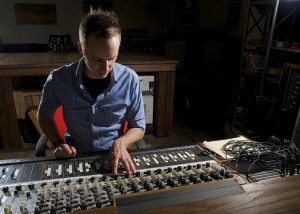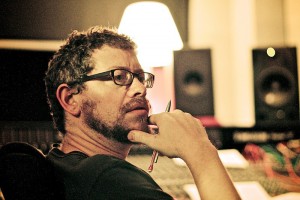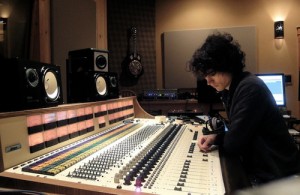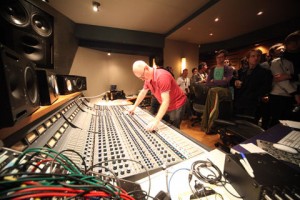Big Wins: Audio Upgrades That Really Matter
Reading through audio forums and magazines, it’s easy to become convinced that the next upgrade is the one that will really make a difference, taking your tracks from mundane to impressive.
Some upgrades of course, are bound to be more significant than others. This week we asked a handful of busy engineers for some of their most essential “big wins” in recent years: Those simple changes that brought significant results.
Sometimes, big results come from big investments. For instance, Vaughan Merrick, an engineer and mixer who’s worked with Amy Winehouse, Mark Ronson, Ghostface Killah, and The Chemical Brothers, cites his recent upgrade to a Pro Tools HDX2 system as one of his most important and satisfying new acquisitions.
Merrick is a vocal proponent of high sample rates and 32-bit floating systems, and he’s also the kind of guy who considers expensive mic-pres, compressors and microphones to be an “invariably excellent investment.” Still, even he’s quick to admit that “choices in the high-end market are often more about aesthetic choices than quality.”
In addition to sexy and significant investments in new systems and boutique audio gear – which are often among the first things we think of when we hear the word “upgrade” – I also wanted to suss out those simple and essential changes that always seem to have a positive impact on every other link in the chain, and pay dividends for years to come.
#1: A Room That Works
When we asked a handful of our favorite engineers about their recent big wins, it wasn’t gear, but environment that was probably the most common theme.
“My biggest wins recently are the facilities I’ve been working in,” says freelance engineer Ted Young, whose discography includes work with Andrew W.K., Secret Machines, The Hold Steady, and Sonic Youth. “Namely Room 17 studios in Bushwick (my new favorite drum room) and Fluxivity in Williamsburg (the best mixing room in the New York area).”
From an empirical perspective, it’s easy to see how the rooms we record in have the potential to be among our weakest links or our greatest assets. Common issues like low frequency resonances and flutter echoes effect not just the sounds we capture, but the very choices we make.
“Your monitoring environment should be as scrutinized as your personal engineering technique,” says Andrew Maury, a young engineer whose list of clients already includes the likes of Ra Ra Riot, Tegan and Sara, Death Cab for Cutie, RAC and The Static Jacks.
There are many ways to treat a room, from DIY diffusors and broadband absorbers to completed room kits and architectural redesigns. Maury’s own favorite solution has been a mobile one: His ASC Attack Wall.
“Its a set of cylindrical tube traps mounted vertically on adjustable poles/stands which you arrange to form a U-shaped wall as a mix environment,” he says. “You set up your monitors inline with the perimeter of the wall, essentially creating a virtual ‘room in a room.’ Transient detail is impeccable, low end both extends and tightens, imaging is panoramic, and the sweet spot seems to double in size. Not to mention, you can use them in tracking to create micro acoustic environments. It is a very pricey endeavor because ideally, you want to have 16-20 of them. But it’s easily the best money I’ve ever spent.”
As crucial as room tuning is, environment isn’t just about getting the sound right. Eli Crews (tUnE-yArDs, ?uestlove, Sean Lennon, Deerhoof), is a recent transplant to Brooklyn from Oakland, CA. He says that “This year, the biggest upgrade I made for myself was creating a room that only I work in, and nobody else touches.”
“Coming out of a ten-year run at shared studio space, a place that is purely my own has become immediately essential for me. It being in my apartment means that I can wander in any time of day or night and listen to a mix, tweak a few things, go for a bike ride, come back and tweak some more, go get a bagel, come back, take a nap, listen, and so on. Easy recall is an essential part of the equation as well…For the remote mixing I’m mostly occupied with these days, this all has proven more valuable to me than a perfectly-treated control room or expensive monitors.”
For Kyle “Slick” Johnson (Fischerspooner, The Hives, Modest Mouse) moving out of New York City and into a new space that made more sense for his lifestyle has easily been one of the biggest wins in recent memory.
“I moved to New York City in 2001 and immediately fell in love with it,” he says. “I spent the first several years trying to get my feet wet in the audio world doing live sound, sales and assisting at a small studio in Greenwich Village. The record industry was already in full nose dive mode while the NYC real estate market was flourishing. Over the years my client base and my skills in audio grew, but that really didn’t seem to matter very much to my life outside of audio. I was always broke and my prospects of ever owning a studio that was more than just a closet in some less than ideal neighborhood seemed like a pipe dream.”

Kyle “Slick” Johnson. Photo by BrandiLynnDesign
“So with the encouragement of my (now) wife, we decided to move out of New York to Philadelphia. Oh man, that was the smartest thing I’ve ever done for my career. I now have an apartment, a private studio (three rooms!), a car, a savings account and a daughter, all of which I’m finally able to afford after scraping the bottom of my checking account for 8 years in New York.”
“I live in a nice neighborhood, my studio is in an “up and coming” neighborhood but the cost of both of those places is likely about 1/4 of what it would be paying for the same places in NYC. Plus, nearly 50% of my clients still make the trip from New York to Philly to work with me. It’s only a 2 hour drive and because I have a lower overhead here in Philly I can keep my rates affordable for most bands and I don’t have to take records purely because they have budgets. I get to work on music that I really like.”
#2: Microphones, Speakers and Instruments
It’s easy and fun for us engineers to geek out about our favorite magic boxes. But the electronic devices that make for the most obvious differences in the studio are usually those with moving parts. Transducers – those physical elements in microphones and speakers that change sound into electricity and vice versa – are still some of the hardest things for manufacturers to do well.
Adam Lasus (Helium, Clap Your Hands Say Yeah, Dawn Landes, Matt Keating), the bicoastal owner of Fireproof Recording and Room 17 says that if he was just getting started today, “the first thing I would invest in to really get better sounds and sonic depth is a good microphone. MJE/Oktavamod and ADK both have mic’s starting around $300 that really shine and sound as good as mics that are much more expensive.”
Eli Janney of Girls Against Boys and SonicScoop‘s InputOutput Podcast seems to agree: “Investing in a great vocal mic was a purchase I never regretted (Every project has vocals, right?). I actually have two: a Soundelux U99B, which is dark but amazing on the right vocal [and] a CharterOak S538B, a more modern sound but not over crispy, never fails to deliver during vocal tracking.”

Eli Crews. Photo via Tape Op.
Eli Crews mentions that “there are a handful of pieces of gear that immediately starting making an imprint on the sound of my recordings — I believe for the better — the day I acquired them: Chandler Limited TG-1, original rackmount Sansamp, Eventide H3000, Lynx Auroras, UAD-2 plug-ins, RETRO Powerstrip, Coles 4038, Neumann M49, Royer SF-12, SoundToys software, etc.” But that’s not what he thinks of most.
“A few years ago I decided I mainly wanted to spend money on instruments, and have amassed a ’60s Ludwig drum set, an Estey folding pump organ from the 1920s, a Doepfer modular synth, a beat-down, barely working Optigan, and various old Moogs, ARPs, Rolands and Casios. Having these instruments available to bands significantly changed the sounds I was recording, and in the long run have had much more of an influence over ‘my sound’ than which mic or preamp I use.”
Another common answer revolved around studio monitors. Your speakers are your only meaningful link to the sounds you’re recording. As with microphones and instruments, there is tremendous variability among speakers. Although there are more good affordable models than ever before, this definitely remains a “get what you pay for” category, and an upgrade here is almost always money well spent.
#3 New Skills and Special Tools
Right alongside the environment and mission-critical gear like mics, speakers and instruments, are our own skills as listeners and manipulators of sound.
One of the most lasting parts of my own audio training was taking the time to learn to differentiate between frequency ranges, compressor settings, delay times, reverb types, audio codecs, mic placements, pitches, harmonies, and to continuously push the limits of my own hearing.
I’ve found that the best way to work these critical listening muscles is not just with studio work, but through deliberate practice and blind listening drills. I’d consider time spent on these exercises among the biggest wins of my entire career, second only to time spent listening to music and working with bands. A good critical listening program, whether it’s one you buy or one you design yourself, can be a lifelong “big win.”
Although you could spend a lifetime honing these fundamentals, there are always new application-specific skills to be learned as well, and they can open up tremendous new possibilities. For Geoff Sanoff, a producer/engineer and co-host of the InputOutput Podcast, sitting down to really master tuning programs was one of those game-changers. He recommends “learning how to use tuning plug-ins so you can’t tell you’re using a tuning plug-in.”
“It takes more time, but the result is simultaneously more natural and yet not gratingly out-of-tune. It also can save your ass when re-tracking isn’t an option. I’ve fixed guitars and pianos with Melodyne that would have been unusable, and I’ve used it to subtly correct singers whose vibe is not supposed to be perfect.”
Another purchase he’s never regretted is similarly specialized. Geoff gushes like Billy Mays when he offers that “iZotope RX2 is the best value function-wise for all manner of sonic restoration needs. Gets rid of guitar buzz, hum and unwanted pops as well as any other program under $5,000!” These are the kinds of tools that allow you to do jobs that might otherwise be impossible.
For Andrew Maury, figuring out digital gain-staging and saturation were huge skill adds that still pay off every day:
“Use simple gain plugins like crazy if you mix ITB. Everywhere. Let them do all the dirty work for your balancing and gain structure feeding plugins. Its an equivalent practice to how analog console mixers use the line trim knob at the top of the channel and they’re dirt cheap in CPU resources! 90% of your mix balance can come from well-placed, static gain adjustments in plugin chains. The result is that your output faders in the DAW become simple tweak handles, not heavy lifters.”
“As an engineer and mixer, also start thinking about “packing” your transients. There’s only so much room in the medium, and achieving “size” is no easy task. Especially in the context of rock music, you simply must introduce distortions and saturations to start shaving transients, which will buy you headroom to fit the whole thing up into the ceiling.”
“You don’t necessarily have to compromise the integrity of the audible signal to put a serious dent in a track’s technical dynamic range…Tasteful distortion can make something “louder” and meter lower. There are so many great analog modeling plugins (Slate VCC, UAD Studer, SoundToys, etc) that are out now which have blown open the door to make this process more and more believable ITB.”
Odds and Ends
Huge wins are just waiting to happen on the ergonomic end of the studio as well. Geoff Sanoff’s list includes “a patch bay for allowing me to incorporate analog gear and route things quickly and efficiently. Saving time means more brain power spent on music.” Other common answers include multi-channel headphone systems like those by Aviom and Hear, and the addition of a console or faderpack to an otherwise DAW-based studio.
There are some topics that engineers will quibble about until the early hours of the morning: analog summing, super-high sample rates, the relative importance of contemporary preamps and converters, this VCA compressor versus that one.
For every engineer on one side of these debates, there seems to be another crowing the opposite story. Some of these questions can potentially be settled with science, and some may forever live solely within the realm of preference and opinion.
Wherever they stand on those issues, it seems that almost every engineer can at least agree that the few indisputable essentials include rooms, mics, speakers, instruments and skills. Throw in a killer song, a good performance, and you have all the materials needed to make a great sounding recording.
When you focus first on upgrades in these few broad categories, you are deep in the realm of the big wins. And once you have these areas well-covered, you can go anywhere from there.
Agree? Disagree? Share some of your biggest wins in the comments section below, and tell us all about those essential upgrades you’d never second-guess.
Please note: When you buy products through links on this page, we may earn an affiliate commission.









promixengineer.com
July 11, 2013 at 9:54 pm (12 years ago)ProAc’s were the biggest win for me this year. Instantly improved my mixes.
dzny
September 21, 2013 at 6:11 pm (12 years ago)RCA ribbon mics have changed what my ears think about sound.